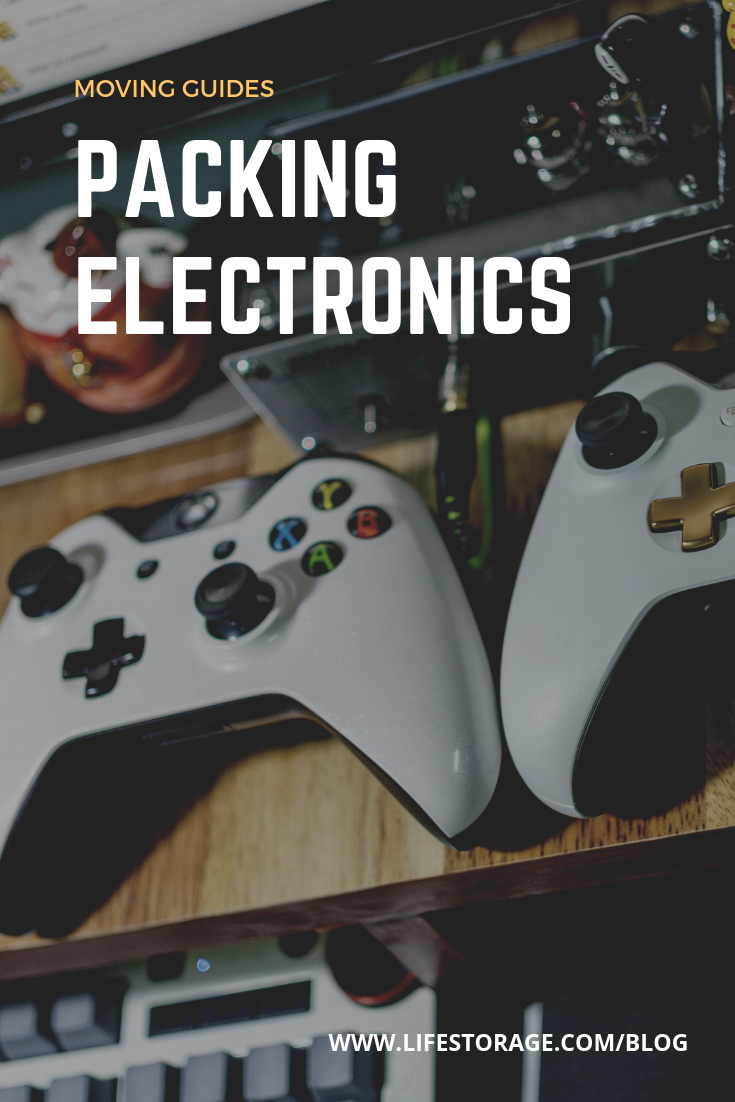
Compared to delicate antiques or family photos, electronics are usually packed in a much more careless fashion. It’s true that computers, game consoles, and printers have rugged plastic cases to protect them from everyday wear, but they do require special care when being put into a box.
During a move, one careless drop by a mover or the UPS man and damage is almost inevitable. If you’re putting electronics into storage, fluctuating temperatures, humidity and dust can wreak havoc on sensitive components.
We’ll teach you how to pack electronics for moving or storage so you can protect your investment. These tips will keep all your electronic devices safe and functioning correctly.
1. Make a backup of all data and files
Be sure to backup important data before putting computer equipment in storage. Although your system is unlikely to suffer damage if it’s adequately protected, all it takes is one drop during transport to turn your computer into a costly paperweight.
2. Remove the batteries
Before you move or store any electronics, remove any batteries in remotes or accessories. Battery corrosion can wreck electronic components.
3. Take out any loose media
Check the unit for any removable media such as DVDs, game cartridges or tapes. Over time, older media can deform if left in a machine.
4. Detach wires and accessories
Detach all peripherals from your computer when storing it. It may seem like a time-saver to leave accessories connected, but prolonged metal-to-metal contact can cause problems, especially in storage without climate control.
5. Use the original packaging if possible

Electronics experts recommend saving the original packaging for electronic devices whenever possible. Original boxes contain pre-shaped foam pieces and custom inserts to keep items from shifting during shipping, so they’re ideal for packing and storage.
Also, original boxes can help resale value, an essential consideration if you’re moving potentially collectible items.
6. Pick a moving box if you don’t have the original
If you no longer have the original boxes for your electronics, use boxes large enough to hold the item with plenty of Styrofoam packing peanuts on all sides.
You want at least two inches of packing on all sides of the electronic. Starch-based peanuts and popcorn are eco-friendly choices for short moves, but for long-term storage, organic materials lack the longevity of synthetics.
7. Add silica gel to the moving box
For electronics storage or long distance moves, add packages of silica gel to the original packaging. Silica absorbs excess moisture before it can collect on metal components and cause corrosion.
8. Protect the fan from dust
Wrap computer monitors and TVs with a protective layer of bubble wrap or towels and tape paper over fans and vents to prevent particles from finding their way into electronic items’ cases.
9. Use moving blankets
Since massive flat-screen televisions don’t fit in standard moving boxes, you can cover these items well with padded moving blankets and store them against a wall to provide support. Never store them flat or stack anything on the screen as pressure can permanently damage some types of screens.
More Tips on How to Pack a Flat Screen TV >>
10. Store electronics in a climate controlled environment

Electronic equipment is highly sensitive to temperature extremes.
- Cold causes metal parts to contract, weakening soldered components. Liquid crystal displays, or LCDs, can even freeze during a harsh cold snap.
- Heat damages electronics in two ways. As metal parts expand in hot weather, they place undue stress on soldered connections. Warm air also holds more moisture, and high humidity is lethal to electronics.
If the device is being stored, keep it in an area where there is an even temperature. If moving a long distance, make sure the box is well insulated from extreme temperatures by using the appropriate amount of packing material.
We hope this guide helped you learn how to pack electronics! Once you’re all packed, a climate controlled storage unit can be a handy spot to store anything that’s leftover.
Read Next: FAQ: What Size Storage Unit Do I Need?
This post originally appeared on the Life Storage blog on 6/5/2013 and was revised on 1/5/2019 to provide new information.






